Did you know that Spain is the world’s second-ranking country when it comes to UNESCO Biosphere Reserves? This distinction speaks volumes about the natural beauty and geological significance of its landscapes. Among these natural treasures are the UNESCO Global Geoparks, a relatively recent designation that was introduced in 2015. These Geoparks represent not just areas of stunning landscapes, but also sites of profound geological importance, revealing the history of humanity and our planet through their unique formations.
Spain is home to 17 UNESCO Global Geoparks, each offering a unique combination of natural beauty, historical significance, and opportunities for geotourism. Here, we delve into the remarkable stories and features of these Geoparks, inviting you to explore their wonders.
Cabo de Gata-Níjar Geopark, Almería (Andalusia)
Cabo de Gata-Níjar is a coastal paradise where winter never comes. Its rugged cliffs and hidden coves reflect the dramatic impact of the tectonic plates of Africa and Europe colliding. This volcanic landscape, dotted with quaint fishing villages of whitewashed houses, can be explored by various means including all-terrain vehicles, horseback riding, and hiking.
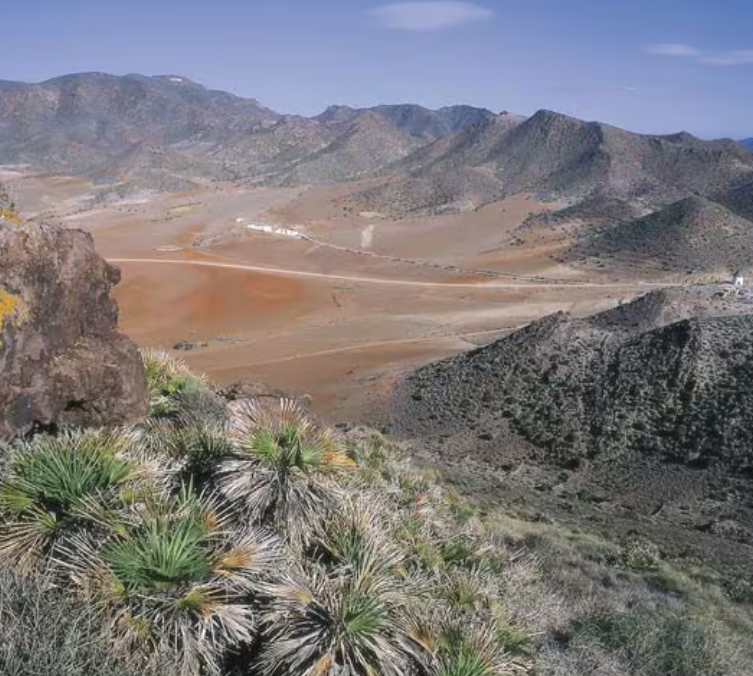
The clear coastal waters reveal a seabed teeming with wildlife and volcanic formations, perfect for snorkelling and scuba diving. For a truly memorable experience, consider a boat tour along the coast to uncover secret coves etched into your memory forever.
Subbéticas Geopark, Córdoba (Andalusia)
In Córdoba’s Subbéticas Geopark, water is the quintessential element, sculpting eccentric shapes in the limestone. This region, characterised by its olive trees and whitewashed villages like Zuheros, Cabra, Luque, and Doña Mencía, is an ideal destination for cyclists, offering specialised routes including the Olive Oil Train Greenway.
Hiking enthusiasts will enjoy the trails of La Nava and Cañón del Río Bailón. Notable geological features in this park include caves such as Los Murciélagos, available for guided tours. For breathtaking views, visit the Balcón de Andalucía at the chapel of Nuestra Señora de la Sierra in the Cabra mountains.
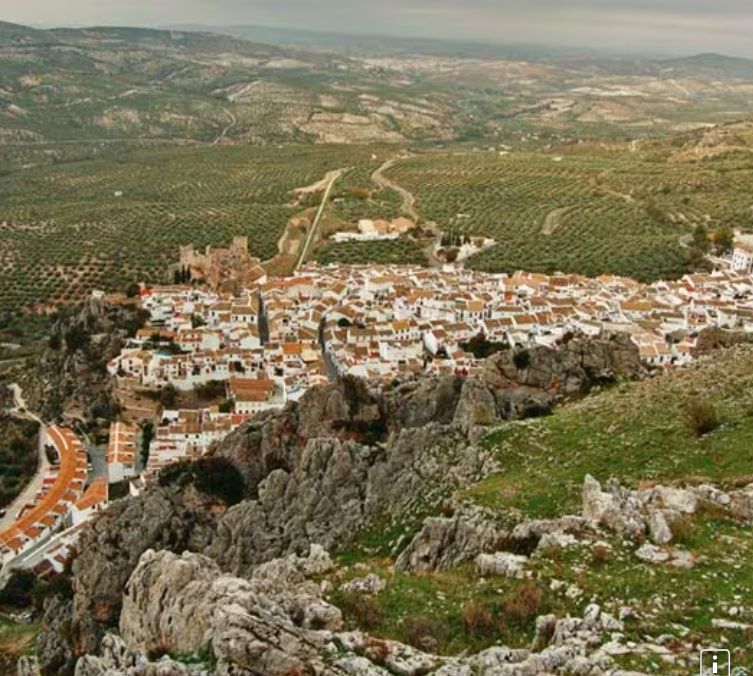
Sobrarbe Geopark – Pyrenees, Huesca (Aragón)
The Pyrenees Geopark in Huesca offers a fascinating journey through time, illustrating the origin of mountains, glaciers, and ancient caves. It even includes the former dwelling of the cave bear in the Oso de Tella cave. This Geopark features numerous hiking and mountain bike routes showcasing some of Spain’s most breathtaking scenery.
Adventurous visitors can enjoy the via ferrata near the Sorrosal waterfall and participate in a geo-mining tour of the region’s historical mines. Highlights also include landscapes around Eripol and the glacier of Monte Perdido in Bielsa, with the visitor centre located in Aínsa.
Basque Coast Geopark, Gipuzkoa (Basque Country)
The Flysch route in the Basque Coast Geopark is a living display of 60 million years of history, covering the municipalities of Zumaia, Deba, and Mutriku. These 13 kilometres of cliffs and sedimentary rock formations are a treasure trove for geologists, providing insights into prehistoric periods, including the extinction of the dinosaurs.
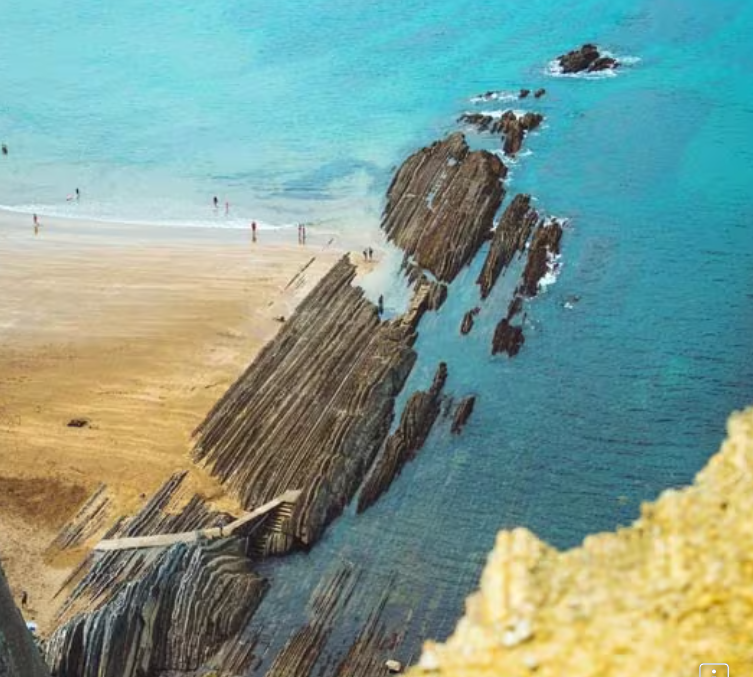
Among the best places to view Flysch is Itzurun Beach in Zumaia, which also hosts the visitors’ centre. Boat tours from here offer a stunning perspective of the cliffs from the sea, with the sunsets being particularly unforgettable. Further inland, the Geopark includes valleys and mountains with caves featuring World Heritage rock art, such as Ekain.
Sierra Norte de Sevilla Geopark, Andalusia
Shaped over 700 million years, the landscape of Sierra Norte de Sevilla Geopark is a geological marvel. Highlights include one of the world’s largest collections of jellyfish fossils and traces of tectonic plates meeting in Beja-Acebuches. The Sierra Norte de Sevilla Greenway offers a scenic walk or cycle route from Cerro del Hierro, a former iron mine revealing striking rock formations, to the picturesque Huesna falls.
Bird watchers can spot the cinereous vulture and the Spanish imperial eagle soaring overhead, adding to the region’s charm.
Villuercas-Ibores-Jara Geopark, Cáceres (Extremadura)
This Geopark offers a mesmerising landscape formed during the Pangaea era, approximately 300 million years ago. From the highest point, the ridge of La Villuerca, visitors can enjoy expansive views of mountain ranges, valleys, and hills. This area also boasts dense oak and chestnut woodlands, home to a variety of fauna, including golden eagles and peregrine falcons.
Key geological sites include the Estrecho de la Peña Amarilla ravine, Marmitas de Gigante del Río Ibor gorge where visitors can swim, and the blockfields of Peraleda de San Román with its distinctive rock formations. The nearby Jerte Valley is renowned for its cherry blossoms in spring, and the Guadalupe monastery is a must-visit World Heritage site.
Central Catalunya Geopark
Once a vast saltwater basin, the Central Catalunya Geopark’s landscape formed as the Pyrenees arose about 36 million years ago. The region’s most iconic landmark is the mountain of Montserrat, known for its unusual rounded rock formations. A visit to the Monastery of Santa María de Montserrat and the surrounding caves is highly recommended.
In Moyá (Barcelona), the Toll Caves, notable for their significant prehistoric and palaeontological finds, are worth exploring. For a unique experience, follow the "Wines of the Geopark" route to sample the local vintages from the Pla de Bages designation of origin.
El Hierro Geopark, Canary Islands
El Hierro is an island of geological wonders, featuring landscapes formed by volcanic activity. The island’s volcanic origins are evident in its lava flows and rock formations. The Geopark visitors’ centre in El Pinar offers a deeper understanding of the island’s volcanic history.
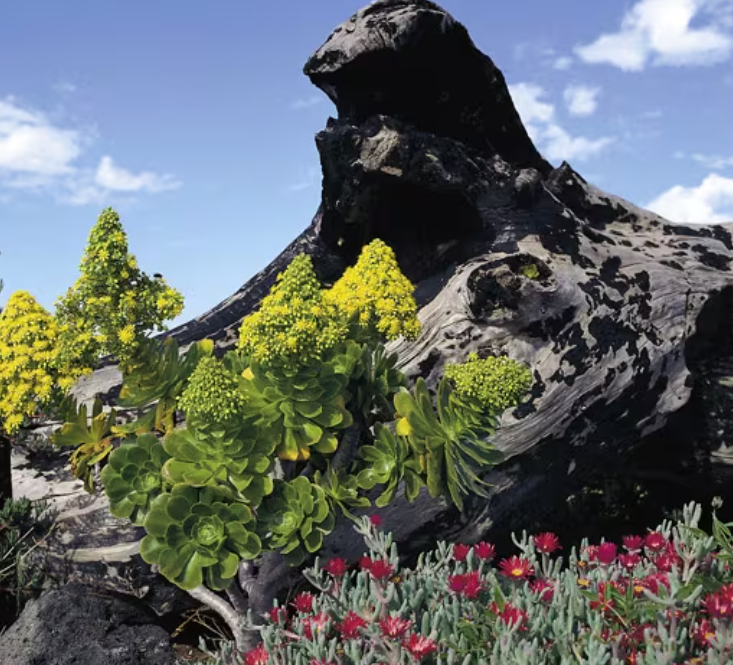
Take in the stunning views from the island’s many viewpoints, such as Jinama, La Peña, Bascos, and La Llanía. Whether driving or cycling, the route from Valverde to San Andrés reveals diverse landscapes, from agricultural areas to dramatic sea views and steep cliffs. San Andrés also tells the legend of the Garoé tree and the phenomenon of horizontal rain. In La Dehesa, witness the trade winds’ effect on the twisted trees of El Sabinar.
Molina-Alto Tajo Geopark, Guadalajara
Ancient rivers and warm seas shaped the terrain of Molina-Alto Tajo, creating deep ravines and unique geological formations. Notable sites include 430-million-year-old fossil deposits near Checa and the fossil forest of Sierra de Arangocillo. This expansive Geopark features 11 signed georoutes and several visitors’ centres, each offering spectacular views.
Among the popular viewing points are Barranco de la Hoz and autumn's Mirador del Tajo, providing stunning perspectives on the changing foliage. In winter, the Mirador del Pellejero shows off snow-covered peaks, while spring’s Mirador del Machorrillo overlooks Taravilla lake.
Lanzarote and Chinijo Islands Geopark, Canary Islands
Lanzarote's volcanic origins are strikingly visible in the Timanfaya National Park, where visitors can explore striking volcanic landscapes and even dine on food cooked using geothermal heat. Highlights include the Timanfaya volcano tour and thermal anomalies where surface temperatures can reach up to 250 ºC, producing spectacular geysers.
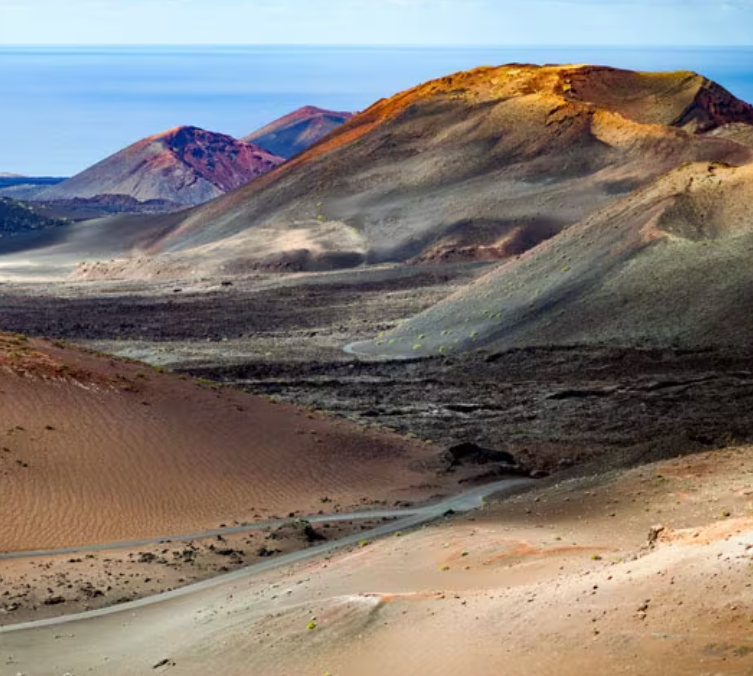
In Tinajo, El Cuervo volcano, Montaña Colorada, and Caldera Blanca all offer pleasant hiking routes. La Geria showcases unique farming methods adapted to the volcanic soil. Along the coast, beaches like Papagayo and the green lake of Charco de los Clicos are must-see spots. The Art, Culture, and Tourism Centres blend the island’s volcanic nature with the artwork of César Manrique.
Las Loras Geopark, Burgos and Palencia (Castilla y León)
Las Loras Geopark showcases a rugged terrain with spectacular ravines, outcrops, and a concentration of Romanesque architecture. Some must-visit sites include the gorges of the Ebro and Rudrón rivers, Las Tuerces, and the Cave of Los Franceses.
Easy-to-access waterfalls such as those in Orbaneja del Castillo and Covalagua add to the charm. Throughout the park, visitors will find pre-Roman castros, Neolithic dolmens, and Iron Age sites, offering a rich historical context to the breathtaking natural scenery.
Spain’s UNESCO Global Geoparks beckon to those with a love for natural beauty, adventure, and a curiosity for geological history. Each Geopark provides a unique experience, promising unforgettable memories and a deeper appreciation of our planet’s geological wonders. Whether you’re hiking, cycling, or simply taking in the views, these Geoparks offer a journey through time and nature that is not to be missed.